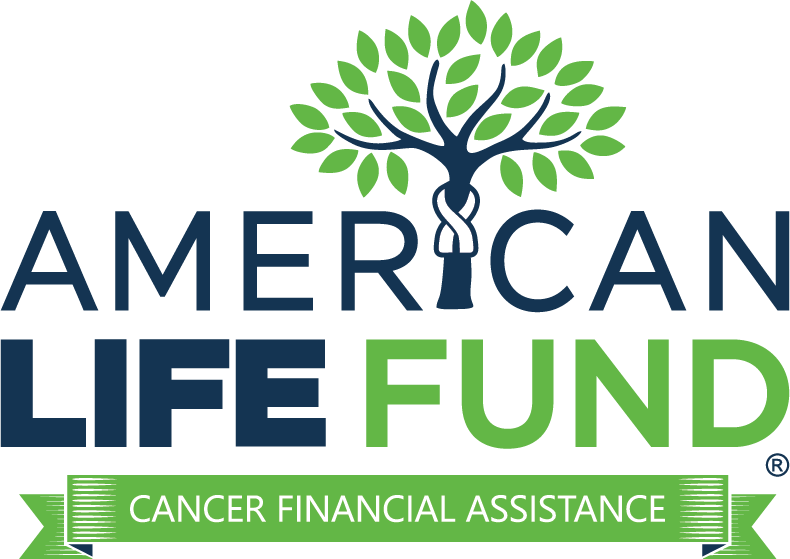A death benefit is the money paid to beneficiaries when someone with life insurance dies. It helps cover immediate expenses and ongoing financial needs. There are different types of death benefits: fixed benefits stay the same, adjustable benefits can change based on financial needs, and graded benefits increase over time, useful for those with health risks. All-cause benefits pay out for any type of death, while accidental death benefits give extra money if the death is due to an accident. These options make sure that beneficiaries get financial support that fits their specific situations.

What is a Death Benefit?
A death benefit is a sum paid to the designated beneficiaries upon the insured individual’s death. It serves as a financial safety net, providing financial stability and support during an already challenging time. Death benefits alleviate the financial burden of surviving family members, ensuring they can cover immediate expenses, ongoing bills, debts, and even future financial goals.
What Are The Types of Death Benefits?
Depending on the circumstances of your death, the specific type of death benefit you may determine how much is disbursed or in what manner it is paid out. Here are the most common types of death benefits:
Fixed Death Benefit
Fixed death benefits are a set and unchangeable amount payable to beneficiaries upon the insured individual’s death. It is common in whole-life insurance policies, while some term life policies may allow for adjustments.
Adjustable Death Benefit
An adjustable death benefit refers to a life insurance policy feature that allows the policyholder to modify a death benefits amount during the policy term. This flexibility can support individuals who anticipate changes in their financial needs over time and want the ability to increase or decrease their coverage accordingly. It offers policyholders the opportunity to customize their life insurance coverage as their circumstances change.
Graded Death Benefit
A graded death benefit is a life insurance policy that provides limited coverage during the initial years. Typically, this type of policy is designed for individuals who may not qualify for traditional life insurance due to certain health conditions or other risk factors. Death benefits gradually increase over a specified period until they reach a full amount. Graded death benefit policies may have certain restrictions and waiting periods before the full coverage amount is available.
All-Cause Death Benefit
An all-cause death benefit is a life insurance benefit paid out regardless of the cause. This means the policy will cover any death due to natural causes, accidents, illness, or any other reason. All-cause death benefits offer comprehensive coverage and financial protection for beneficiaries in the event of the insured individual’s death, regardless of the circumstances.
Accidental Death Benefits (ADB)
Accidental death benefits, also known as AD&D (Accidental Death and Dismemberment) benefits, are additional coverage options that can be added to a life insurance policy. These benefits provide an additional payout if the insured person dies due to an accident. Accidental death benefits are typically offered as a rider or add-on to a life insurance policy. They can provide extra financial protection in the event of accidental death.
Accidental Death And Dismemberment Benefits (ADDB)
Accidental death and dismemberment benefits, often abbreviated as AD&D benefits, are similar to accidental death benefits but also provide coverage for severe injuries resulting in the loss of limbs or certain bodily functions. In addition to death benefits, ADDB can provide a partial benefit if the insured individual experiences qualifying injuries, such as the loss of a limb, sight, or hearing, due to an accident. This coverage can offer additional financial support to help individuals cope with the impact of such accidents.
What is a Death Benefit Rider?
A death benefit rider is an additional provision or endorsement that can be added to a life insurance policy or annuity contract. It offers extra benefits or features beyond the standard terms of the policy, allowing policyholders to customize their coverage according to their specific needs. The rider specifies the conditions under which additional death benefits will be paid to the beneficiaries. This means that if the insured individual meets the criteria outlined in the rider, such as death due to a specific cause or during a specific time period, the beneficiaries will receive additional benefits on top of the regular life insurance policy death benefit. A death benefit rider gives policyholders increased flexibility and options to enhance coverage and provide added financial protection for their loved ones.

How do Death Benefits Work?
Death payable to a beneficiary under a life insurance policy is generally guaranteed as long as the premiums are paid, and the death falls within the criteria specified in the insurance contract. Upon the death of the insured or annuitant, the designated beneficiaries will receive the death benefit amount.
It’s important to note that if a policyholder borrows against their policy’s cash value and does not repay the unpaid loan amount, it will be deducted from the death benefit. This ensures that outstanding loans are settled before the remaining benefit is paid.
In cases where the policy expires before the policyholder’s death, such as with term policies, beneficiaries will not receive a death benefit. This highlights the importance of selecting an appropriate policy duration based on individual needs and circumstances.
One advantage of death benefits from life insurance or annuities is that they typically bypass probate, which legally verifies a will’s authenticity. By bypassing probate, beneficiaries can gain faster access to the funds, providing financial support during a challenging time. However, if no beneficiary is named in the policy, the insurer typically pays the death benefit to the insured’s estate, which might undergo probate.

What is a Death Benefit Beneficiary?
A death benefit beneficiary refers to the individual or entity designated to receive the death benefit payable under a life insurance policy. The insured individual’s partner, children, and close loved ones are the most common beneficiaries. However, the policyholder has the flexibility to name any person or organization as a beneficiary.
When naming multiple beneficiaries, it is important to specify the percentage or portion of the death benefit that each beneficiary should receive. This ensures that the distribution of funds aligns with the policyholder’s intentions and provides clarity for the insurance company when processing the claim.
In addition to primary beneficiaries, policyholders can also designate contingent beneficiaries. Contingent beneficiaries are named to receive the death benefit only if all primary beneficiaries have predeceased the policyholder. This serves as a backup plan to ensure that there is a secondary recipient in case the primary beneficiaries are unable to receive the death benefit.
By carefully selecting and updating beneficiaries, policyholders can ensure that their life insurance proceeds go to the intended individuals or organizations, providing financial support and security to their loved ones after their passing.

What Are The Requirements For The Payout of Death Benefits?
Certain requirements need to be fulfilled to receive death benefits payable to a beneficiary. Here are the key steps:
Beneficiaries should identify the insurance company of the deceased’s life insurance policy or annuity contract. This information is crucial for initiating the claims process.
Policyholders should inform their designated beneficiaries about the details of the policy or annuity when naming them. This ensures that beneficiaries know their rights and responsibilities when filing a death claim.
Once the insurance company has been identified, the beneficiaries must complete a death claim form provided by the insurer. This form typically requires the following information:
- Insured’s policy number
- Name of the insured
- Social Security number of the insured
- Date of death
- Preferred method of payment for the death benefit proceeds
The completed death claim form should be submitted to the respective insurance company. A copy of the death certificate is usually required along with the claim form. It is important to note that most insurance companies require a certified death certificate clearly stating the cause of death.
In cases where a policy or annuity has multiple beneficiaries or survivors, each individual must fill out a separate death claim form. This ensures that each beneficiary’s information and preferences are properly accounted for in the claims process.
By following these requirements and providing the necessary documentation, beneficiaries can initiate the payout of death benefits and receive the financial support they are entitled to under the policy or annuity contract terms.
What Are The Payout Options For a Death Benefit?
When it comes to the payout options for a death benefit, there are several choices available. Here are the most common options:
Lump-Sum Payout: This is the most straightforward option, where the entire death benefit amount is paid to the beneficiaries in a single lump sum. Typically, this lump-sum payment is not considered taxable income.
Retained Asset Account: Some insurance companies offer an option to leave the death benefit with them in a retained asset account. This account is interest-bearing, and beneficiaries are provided with a checkbook or debit card for easy access to the funds. It’s important to note that any interest earned on the account is taxable.
Life Income Payout: With this option, the beneficiaries receive the death benefit in guaranteed payments for the rest of their lives. The payment amount is determined based on the beneficiary’s age when filing the claim. This provides a steady stream of income for the beneficiary’s lifetime.
Life Income With Period Certain: This option combines the life income payout with a specific duration of payments. Beneficiaries receive regular payments for a predetermined period. The remaining payments are passed on to secondary beneficiaries if the beneficiary passes away before the period ends.
Specific Income Payout: In this option, the death benefit is disbursed to beneficiaries in installments over a specific timeframe, such as 10% of the benefit paid yearly for 10 years. Any unpaid portion of the benefit typically earns interest. It’s important to note that the interest earned during this duration is considered taxable income.
It’s essential for beneficiaries to carefully consider their financial needs and goals when choosing a payout option for a death benefit. Consulting with a financial advisor can help make an informed decision based on individual circumstances and long-term financial planning.

Are Death Benefits Taxable?
Regarding the taxation of death benefits, the rules can vary depending on the type of benefit and the specific circumstances. Here are some key points to consider:
Life Insurance Policy: Generally, the death benefit received from a life insurance policy is not subject to ordinary income tax. This means beneficiaries do not have to report the death benefit as taxable on their federal income tax return.
Estate Tax: If the death benefit is paid to the estate of the deceased and the estate’s total value surpasses the estate tax exemption limit, it may be subject to federal or state estate tax. The estate tax exemption limit can vary, so it’s important to consult with a tax professional or estate planning attorney for guidance specific to your situation.
Annuity With Death Benefit: In the case of an annuity with a death benefit, the taxation of the received payments depends on the type of annuity and how the payments are structured. If the annuity payments are considered taxable income, then the death benefit payments received by beneficiaries might also be subject to income tax. It’s important to review the tax implications of the specific annuity contract and consult with a tax advisor for guidance.
Tax laws can change over time, so it’s always advisable to consult with a tax professional or financial advisor who can provide up-to-date information and guidance tailored to your circumstances.
How Does The Death Benefit Work With Different Types of Life Insurance?
Different types of life insurance have varying mechanisms for the payout of the death benefit. Here’s how it works for two common types:
Term Life Insurance:
- Premiums remain level for a specified duration, such as 10, 20, or 30 years.
- If the insured passes away within the policy’s term, beneficiaries receive a payout known as the death benefit.
- However, no death benefit is paid if the insured is still alive when the policy expires.
Permanent Life Insurance:
- This type of policy remains active throughout the insured’s lifetime as long as premiums are paid.
- The death benefit is paid to the designated beneficiaries when the insured passes away.
- It’s important to note that for the death benefit to be paid, the policy must not have lapsed due to non-payment of premiums.
Other factors that can impact the death benefit amount and payout include:
- Loans against the policy: If the insured has taken out a loan against the policy’s cash value and does not repay it, the loan amount is usually deducted from the death benefit.
- Cash value accounts: Some whole life insurance policies have a cash value component. These policies accumulate value over time, serving as a savings or investment component. If the cash value remains unused, it typically reverts to the insurance company upon the policyholder’s death.
It’s essential to review your life insurance policy’s specific terms and conditions to understand how the death benefit operates and any factors that may affect its payout. Consulting with a financial advisor or insurance professional can help clarify any questions and provide guidance tailored to your circumstances.

When Could a Death Benefit Claim be Denied?
There are several circumstances in which a death benefit claim in a life insurance policy could be denied. Here are a few common scenarios:
Beneficiary Status Change: Policyholders can change beneficiaries without informing previous ones. If a beneficiary has been changed and the policyholder passes away, the new beneficiary may receive the death benefit, potentially resulting in a denied claim for the previous beneficiary.
Lapsed Policy Due to Non-Payment: Life insurance policies typically have a grace period after a missed premium payment. If the policy lapses (meaning the coverage is no longer active) due to non-payment, no death benefit will be paid. However, if the lapse is recent, such as due to the policyholder’s hospitalization, there may be an opportunity for a beneficiary to pay the past-due premiums to reactivate the coverage and receive the death benefit.
Fraudulent Activity: Concealing medical conditions or other relevant details during application can lead to denied claims. Most life insurance policies have a two-year contestability period, during which the insurer has the right to investigate the accuracy of the information provided. The claim may not be paid if fraud or misrepresentation is detected during this period.
Death by Suicide: Death benefits are typically not paid if the insured dies by suicide within the first two years of the policy. This exclusion is commonly known as a suicide clause. After two years, death by suicide is generally covered, and the death benefit would be paid to the beneficiary.
It’s important to carefully review the terms and conditions of your life insurance policy to understand any exclusions or limitations that may apply. If you have questions or concerns about potential claim denials, it’s advisable to consult with an insurance professional or legal advisor who can provide guidance specific to your situation.
Can a Policy Owner Claim a Death Benefit While Alive?
In some situations, a policy owner may claim a portion of the death benefit while still alive through a financial option known as a viatical settlement.
Viatical Settlement:
- A viatical settlement is a transaction where a person with a life-threatening or terminal illness sells their life insurance policy to a third party in exchange for a lump-sum payment.
- The third party becomes the new policy beneficiary and receives the full death benefit upon the policyholder’s death.
- This option provides immediate funds to the policyholder, which can be used for medical treatments, living expenses, or other financial needs.
Viatical Settlements allow policyholders to access funds from their life insurance policies while still alive. These options can provide financial support during challenging times and help address immediate needs. It’s crucial to review the terms and conditions of your policy or consult with a financial advisor to understand the specific provisions and requirements regarding this benefit.





